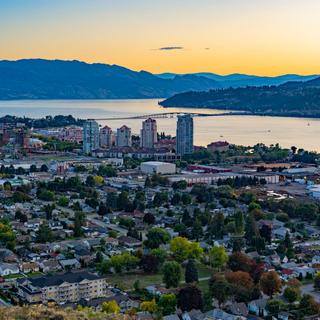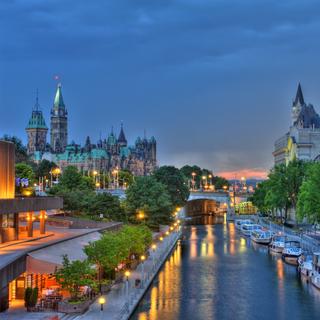Winnipeg weather and climate in 2025
Day
-11 °C
Night
-21 °C
Sea
0 °C
Precipitation
18 mm
in month
Rainy days
5 days
in month
Daylight
8 hours
average
Sunshine
4 hours
average
Humidity
78 %
Weather charts for Winnipeg
Find more destinations like this
Closest destinations for Winnipeg
Closest cities for Winnipeg
Weather overview for Winnipeg
Weather overview
Winnipeg, the capital of Manitoba, Canada, experiences a continental climate characterized by sharp seasonal contrasts. In winter, Winnipeggers brace for extreme cold and snow, with January and February often dipping below -20 °C (-4 °F). The summers can be pleasantly warm, peaking around 27 °C (81 °F) in July. As the fall arrives, temperatures start to decline, reaching close to freezing by October. Throughout the year, Winnipeg sees a wide range of weather conditions, making it important to dress appropriately for the season.
January weather
January in Winnipeg is undeniably cold with nighttime temperatures averaging a chilly -21 °C (-7 °F). Daytime high temperatures struggle to reach -11 °C (12 °F), and with 5 days of precipitation, snowfall is a common sight. Despite the cold, the city averages 4 hours of sunshine per day, providing some respite from the wintry conditions.
February weather
As February arrives, there's little relief from the winter chill in Winnipeg, with night temperatures still averaging a frigid -18 °C (-1 °F). Nevertheless, the average daytime temperature increases slightly to -7 °C (19 °F). An average of 3 days of precipitation suggests fewer snow days, and with more sunlight at 5 hours per day, the days are gradually becoming brighter.
March weather
March in Winnipeg marks the transition from the harsh winter into a milder spring. The night temperatures remain frigid at an average of -11 °C (13 °F), but the daylight brings a more mild 0 °C (32 °F). An average of 5 days for precipitation, and the presence of 6 hours of sunshine contribute to the gradually thawing landscape.
April weather
April showcases Winnipeg's spring awakening, with a substantial temperature rise to an average daytime high of 11 °C (51 °F). Nighttime temps remain cool, averaging -2 °C (28 °F). With still 5 days of precipitation, the snow gives way to rain, and the increase of 8 hours of sunshine per day encourages the blooming of local flora.
May weather
May brings a significant warmth to Winnipeg, with daytime temperatures averaging a comfortable 19 °C (66 °F). Nights are cooler but fair at 5 °C (40 °F). 9 days of precipitation coupled with 9 hours of sunshine make for a mix of rainy and sunlit days as the city fully embraces spring.
June weather
June ushers in the first month of summer in Winnipeg with long days and high temperatures averaging 24 °C (75 °F). The night averages a pleasant 12 °C (53 °F). With 11 days of precipitation and a high 66 % humidity, residents can expect occasional thunderstorms amidst sunny days boasting 9 hours of sunlight.
July weather
July represents the peak of summer in Winnipeg, introducing the year's highest average daytime temperatures of 27 °C (81 °F). Nights are warm too, with averages of 15 °C (59 °F). Rainfall averages 81 mm (3.20 in) over 10 days, ensuring that the warmth is occasionally tempered by refreshing rains. The city enjoys 10 hours of sunshine, making it ideal for outdoor summer activities.
August weather
August remains warm in Winnipeg, though slightly cooler than July, with average highs of 27 °C (80 °F) and lows of 13 °C (56 °F). 9 days with precipitation, along with 70 % humidity, means residents may still need to be prepared for intermittent rain, though there's plenty of sunshine with 9 hours per day to enjoy the tail end of summer.
September weather
September in Winnipeg signals the coming of autumn, with average daytime temperatures dipping to 20 °C (68 °F). The nights begin to cool significantly, averaging 7 °C (45 °F), and although the number of precipitation days stands at 8 days, the abundance of sunshine at 6 hours per day allows for a pleasant transition into the cooler season.
October weather
October in Winnipeg sees a more pronounced temperature drop, with average daytime highs of 11 °C (52 °F) and nighttime lows at the verge of freezing at 0 °C (32 °F). An average of 6 days of precipitation translates to increased chances of both rain and early snow flurries, while sunshine hours decrease to 5 hours per day.
November weather
November's chill sets in with average highs only around 0 °C (33 °F) and lows dropping to a biting -8 °C (17 °F). Nights become longer and darker, contributing to an average of 3 hours of sunshine, and the precipitation amount of 24 mm (0.96 in) often falls as sleet or snow as winter begins to rear its head once more.
December weather
December marks the onset of Winnipeg's formidable winter, with the average high temperature only mustering about -8 °C (17 °F) during the day and nighttime lows plunging to -18 °C (0 °F). An average of 5 days with precipitation, and 3 hours of sunshine means short days and long nights dominate, and the snow-covered landscape becomes the norm.
FAQs
How should one dress for a day out in Winnipeg during January?
Dressing in January in Winnipeg calls for layers – thermals, heavy coats, mittens, scarves, warm hats, and insulated boots are essential to withstand the daytime high of only about -11 °C (12 °F) and the even colder nights.
Is February in Winnipeg colder than January?
February in Winnipeg offers a marginal temperature increase with average highs of -7 °C (19 °F), making it slightly less cold than January. The momentum of increasing daylight and slowly rising temperatures begins to offer hope for spring.
What kind of temperatures can be expected during March in Winnipeg?
March sees the icy grip of winter begin to loosen with nighttime lows averaging around -11 °C (13 °F) and daytime temperatures finally reaching the freezing point at 0 °C (32 °F), signaling a slow but steady advance towards spring.
Does it still snow in Winnipeg during April?
Snow in April can occur but is less common as temperatures rise. Precipitation during the month averages around 30 mm (1.18 in), indicating a mix of rain and occasional snow as winter transitions into spring.
What kind of weather should one expect in Winnipeg during May?
Expect a delightful spring in Winnipeg during May with averages of 19 °C (66 °F) in the day, while cooler nights at 5 °C (40 °F) require a light jacket. The blend of sun and rain nurtures the city's greenery and flowers into full bloom.
Are thunderstorms common in Winnipeg during June?
Thunderstorms can indeed be a part of Winnipeg's weather in June, with an average of 11 days with some form of precipitation, often bringing thunder and lightning alongside the much-needed rain.
What is a typical day like in Winnipeg during July?
A typical day in July is pleasantly warm with temperatures reaching 27 °C (81 °F), creating a perfect setting for picnics, barbecues, and waterside relaxation. Rain is sporadic, so having an umbrella or raincoat handy for the occasional showers would be wise.
How does August weather in Winnipeg compare to July?
August in Winnipeg has mildly cooler temperatures compared to the sweltering heat of July, with daytime highs averaging 27 °C (80 °F) and night temperatures dropping to a comfortable 13 °C (56 °F).
What's the weather like in Winnipeg as autumn approaches?
Autumn's approach is marked by milder days with average highs of 20 °C (68 °F) and crisper nights. As the foliage starts to change, Winnipeg enjoys a comfortable climate with fewer hot days, ideal for experiencing the city's natural fall beauty.
What can residents expect from October's weather in Winnipeg?
Residents can expect October to bring cooler days with an average high of 11 °C (52 °F), and nights that can feel quite chilly as they hover close to freezing. It's a month of transition, where warmer clothes become a necessity, and layers become key to navigating the varied temperatures.
Is November in Winnipeg generally cold or mild?
November is indeed cold in Winnipeg, with temperatures hovering just above freezing during the day and dropping significantly at night, signaling a steady march towards the deep freeze of winter.
How do residents of Winnipeg cope with December's low temperatures?
Winnipeg residents are well-accustomed to the cold and prepare for December by donning insulated, waterproof clothing and heating their homes. The festive season and community spirit also help in keeping warm during the frosty days and nights.
We make the most from 40 years of historical weather data to predict the best weather conditions.
Deciding on where to go for a holiday is hard sometimes. Get inspired by the most popular destinations.
We aggregate data from combining multiple weather sources to ensure accuracy of the highest order.







